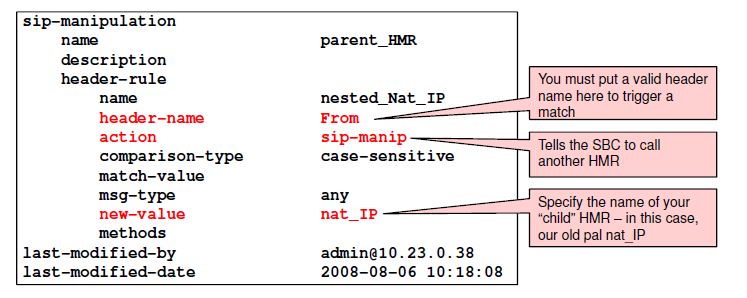Topology Hiding in ACME SBC
SIP Manipulation
You can do almost any SIP header manipulation in SIP Manipulation section in ACME SBC. I will show how to do topology hiding in Acme SBC with Header Manipulation Rules (HMRs).

SIP manipulations can be used to add, delete, store and manipulate virtually any SIP header or element. It’s functionality even extends to SDP line manipulations.
Perhaps the most popular use of SIP manipulations is to extend the built-in topology hiding manipulation ACME_NAT_TO_FROM_IP to include other headers which contain IP addresses.
Below is an example of performing topology hiding on the P-Asserted-Identity header. The first header rule calls ACME_NAT_TO_FROM_IP. This ensures that IP addresses in the To and From headers are mapped. The second header rule defines that the header P-Asserted-Identity is to be manipulated. The element rule called from this header rule replaces the IP address found in the uri-host portion of the P-Asserted-Identity header with the Net-Net SD’s configured local IP address.
sip-manipulation
name topology-hiding
description NAT To, From, PAI headers
split-headers
join-headers
header-rule
name natToFromHeaders
header-name To
action sip-manip
comparison-type case-sensitive
msg-type any
methods
match-value
new-value ACME_NAT_TO_FROM_IP
header-rule
name natPAIheader
header-name P-Asserted-Identity
action manipulate
comparison-type case-sensitive
msg-type out-of-dialog
methods
match-value
new-value
element-rule
name natPAIUriHost
parameter-name
type uri-host
action replace
match-val-type ip
comparison-type case-sensitive
match-value
new-value $LOCAL_IP
